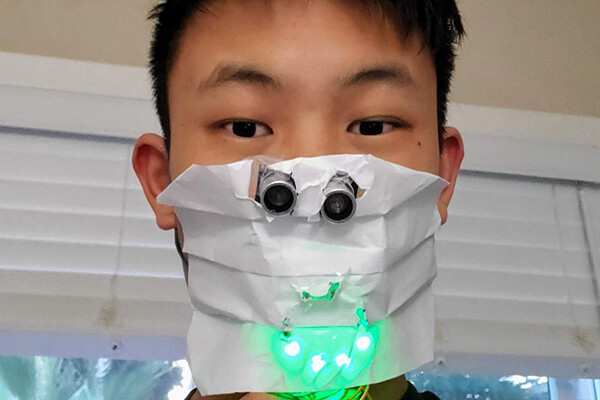
One student’s “Smile Mask” used a combination of sensors and LED lights to promote social distancing. Get too close and the green smile switches to a red frown. (Image: Penn Engineering)

One student’s “Smile Mask” used a combination of sensors and LED lights to promote social distancing. Get too close and the green smile switches to a red frown. (Image: Penn Engineering)


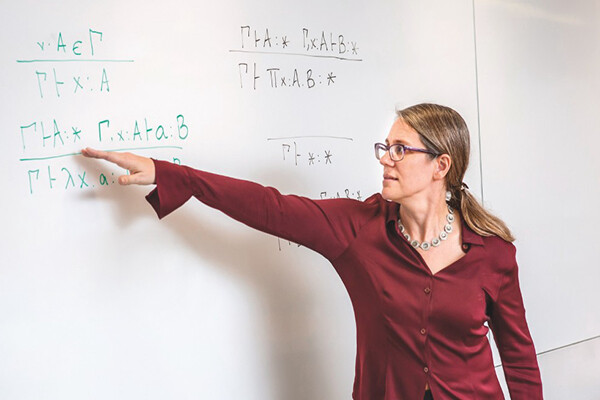
Stephanie Weirich (Image: Penn Engineering)
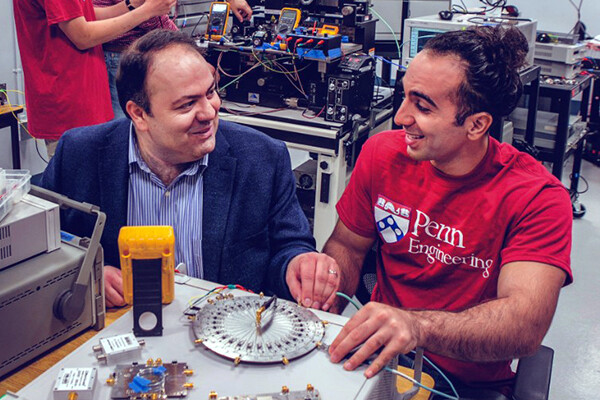
Aflatouni’s (left) lab works to make the electronic and photonic components of our modern information delivery infrastructure work together. (Pre-pandemic image: Penn Engineering)
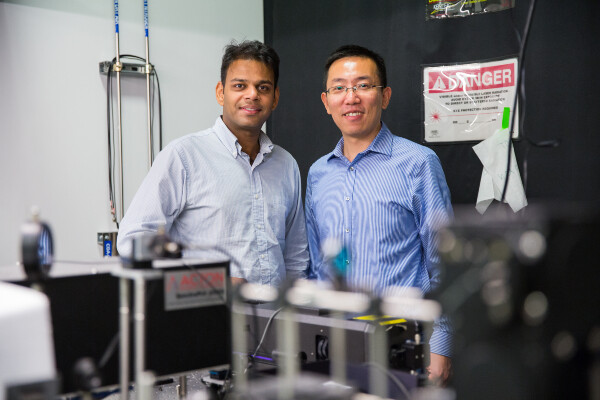
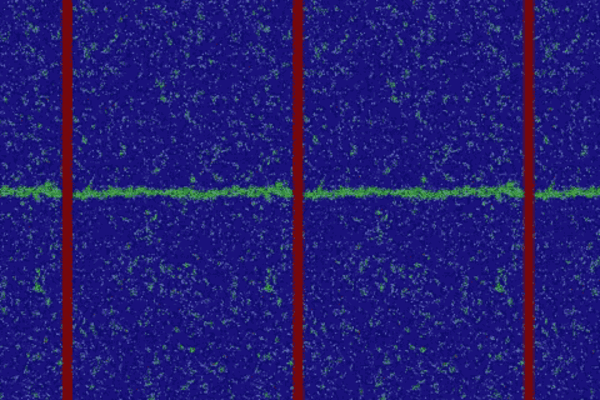
A molecular simulation of a grain boundary (green) migrating. (Image: Penn Engineering)
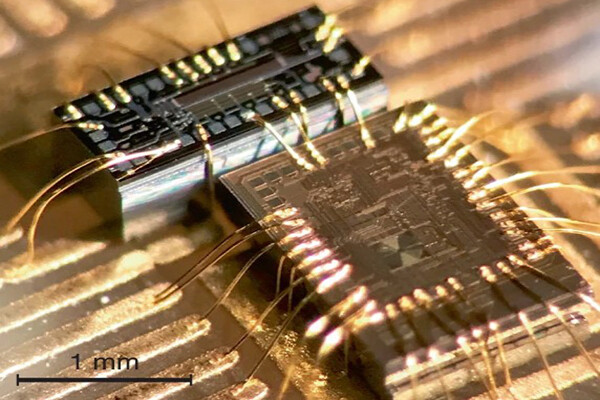
This three-square-millimeter filter chip can take the output of low-cost lasers and convert it such that it has the same frequency noise as bigger and significantly more expensive lasers. (Image: Penn Engineering)

In this artist’s conception, fleets of flyers could be launched from ground-based rovers and steered with lasers to collect samples. Planets and moons with thin atmospheres and low gravities would enhance these flyers’ ability to levitate by shooting air through their corrugated channels. (Image: Penn Engineering)
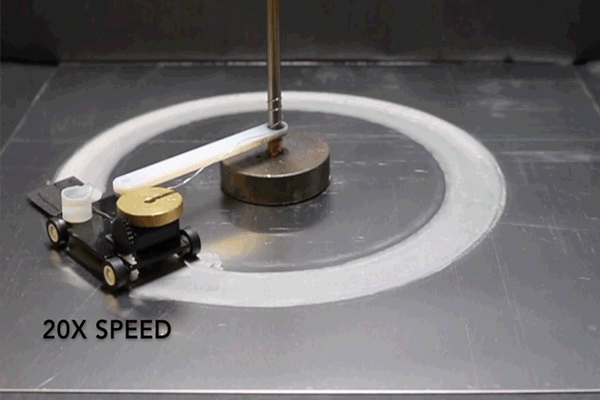
Rather than a battery, the researchers’ metal-air scavenger vehicle gets energy from breaking chemical bonds in the aluminum surface it travels over. The vehicle keeps going until the hydrogel slab it’s dragging dries out or the surface is completely corroded, but a freely moving robot could seek out new sources of water and metal.